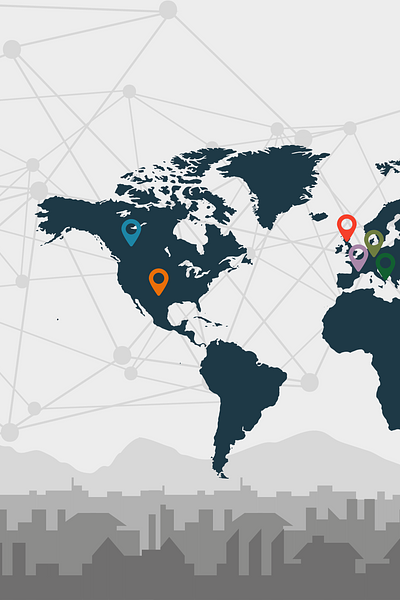
The report, "International Digital Connectivity Readiness Index," measures performance across both digital infrastructure — such as broadband, Gigabit, 4G, and 5G connectivity — and digital adoption, which includes metrics like digital skills, online security, access to public services, affordability, and innovation.
According to FarrPoint’s digital economics team, the UK tops the new index, with the US and Germany sharing 2nd place on the overall readiness score. Canada, Japan and France share 4th place, with Italy coming in last overall. The real differences can be seen by drilling down to compare individual metrics.
While typically scoring in the low teens in global broadband measures, the US comes in second here because the index applies higher weighting to digital adoption instead of merely scoring for broadband infrastructure being in place.
“Broadband infrastructure, fiber as well and other high-speed technologies can’t capitalize on its potential without actual use,” says Dr Andrew Muir, CEO of FarrPoint. “Infrastructure on its own doesn’t derive benefits if no one uses it/adopts it. Measuring and driving adoption is important and this is strong in the US.”
In fact, the US ranks 6th in terms Digital Connectivity Infrastructure despite scoring highly in mobile connectivity (1st in 4G coverage and 1st in 5G coverage). The US’s strong mobile infrastructure rankings is counterbalanced by slightly below-average broadband infrastructure and connectivity. The US has the lowest ranking in Gigabit-capable coverage.
“It’s clear why the US is investing heavily in broadband infrastructure,” says Muir. “With better connectivity alongside education to drive adoption, the US is sure to find itself at the top of our index by decade’s end.”
The US ranks 3rd among G7 nations for Digital Connectivity Adoption, with its technology sector driving high scores in Digital Economy and Innovation, but Affordability remains a real issue.
This annual benchmarking report and framework allows governments and policymakers to better understand and assess their strengths and challenges in digital connectivity and make data-driven decisions to enhance their digital strategies.
This index methodology can be used to further analyse and compare performances on a more granular level i.e. state / region or city level within each country.
"Our International Digital Connectivity Readiness Index report underscores the vital role digital connectivity plays in driving economic growth, social progress, and environmental sustainability”, says Matthew Izatt-Lowry, FarrPoint’s Head of Economics. “As the global economy increasingly relies on digital infrastructure, understanding the unique challenges and opportunities of each country is paramount for policymakers to make informed, evidence-based decisions.”

FarrPoint is a connectivity and smart technology consultancy with offices in the UK, Canada and the US. The team comprises technical consultants, economists and data analysts, who provide advice to public and private sector clients, from national governments to telecoms operators and local authorities.
@farrpoint
In the United States, contact:
Doug Adams
Broadband Marketers
720-412-7876 * [email protected]
Notes for editors regarding methodology
The scores contained within this International Digital Connectivity Index report are based on key indicators gathered from a series of data sources, including the OECD, the World Bank, the European Commission, ITU, GSMA, the UN and UNESCO. As detailed within the report, four key indicators have been produced for infrastructure based on metrics around Gigabit, Superfast, 4G and 5G connectivity. On adoption, eight key indicators have been produced covering Online Households, Digital Skills, Security Online, Online Wellbeing, Access to Public Services, Affordability, the Digital Economy and Innovation. A robust approach to weighting has been used to ensure that the indicators take into account the commercial, regulatory and policy prioritisation considerations. This included a larger weight being put on the adoption of digital technologies given the importance this has in delivering real outcomes for households and businesses alike. This delivers a result that delivers real value when it comes to designing digital connectivity infrastructure, adoption and inclusion project
Connectivity is important. It drives business and society, bringing communities and commerce together. That's why we use our insight and experience to connect people and business.